Info
Subfamily: Panicoideae
Genus etymology: Paspalum = "millet" [Greek] some species are used as cereals
Species etymology: conjugatum = "joined, connected" [Latin] refering to the usually paired inflorescence branches
Photosynthetic type: C4 (warm season)
Nativity: naturalized - accidental
First recorded in Hawaiʻi: 1840
Map
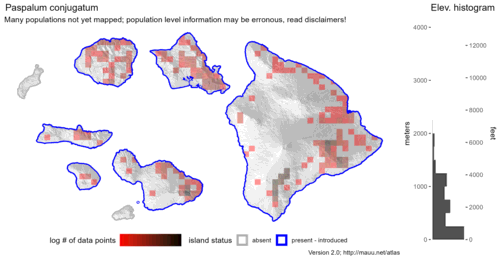

Inflorescence
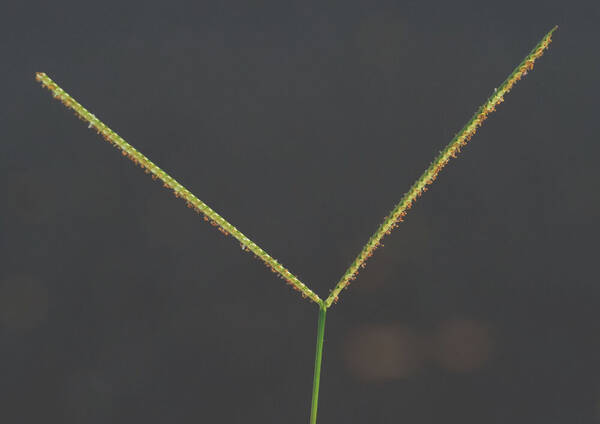
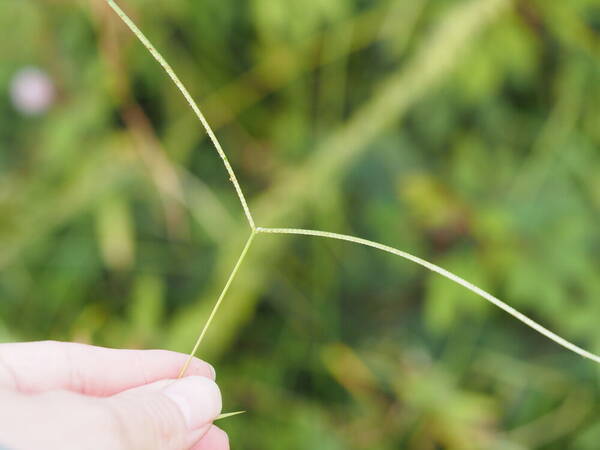
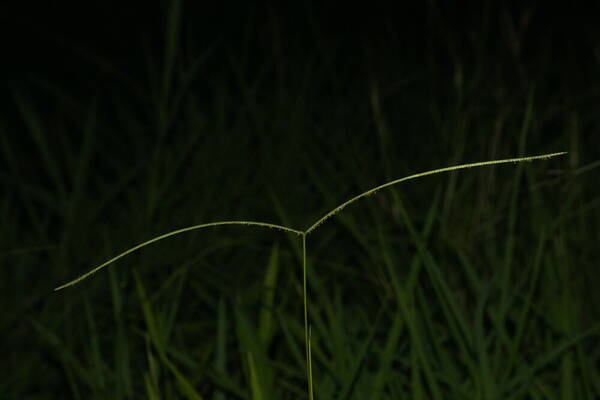

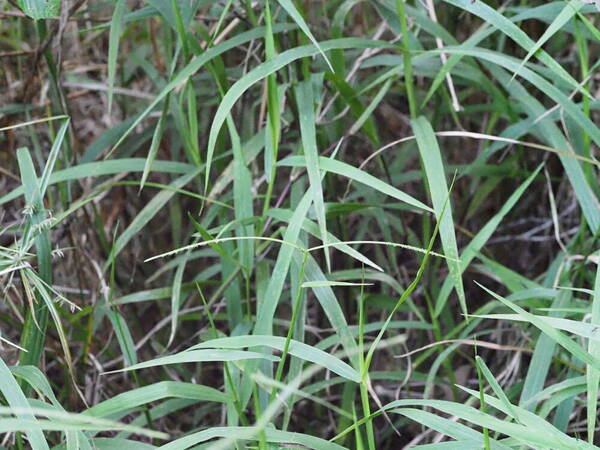
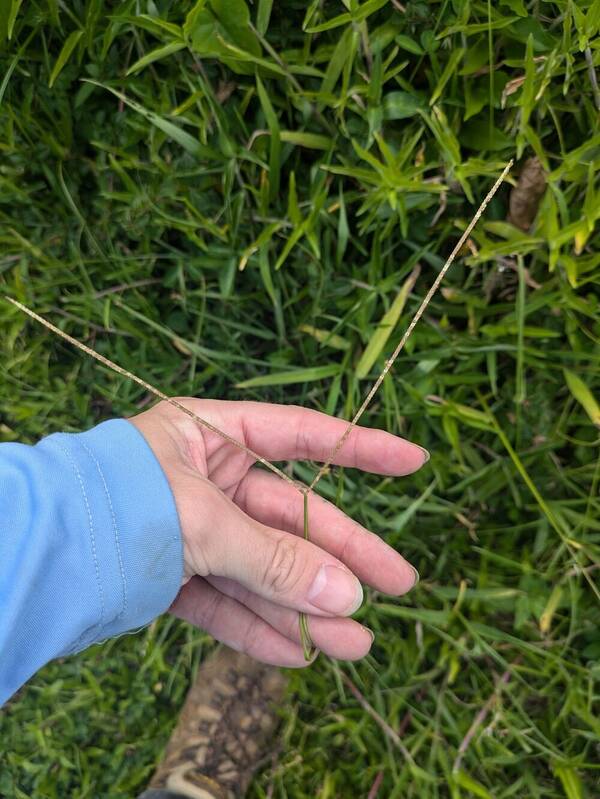
Plant
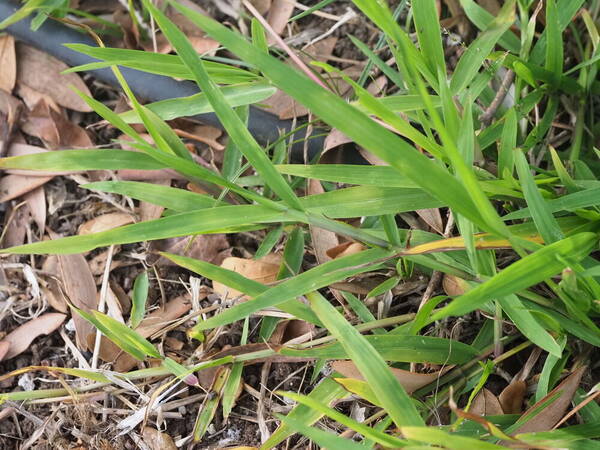

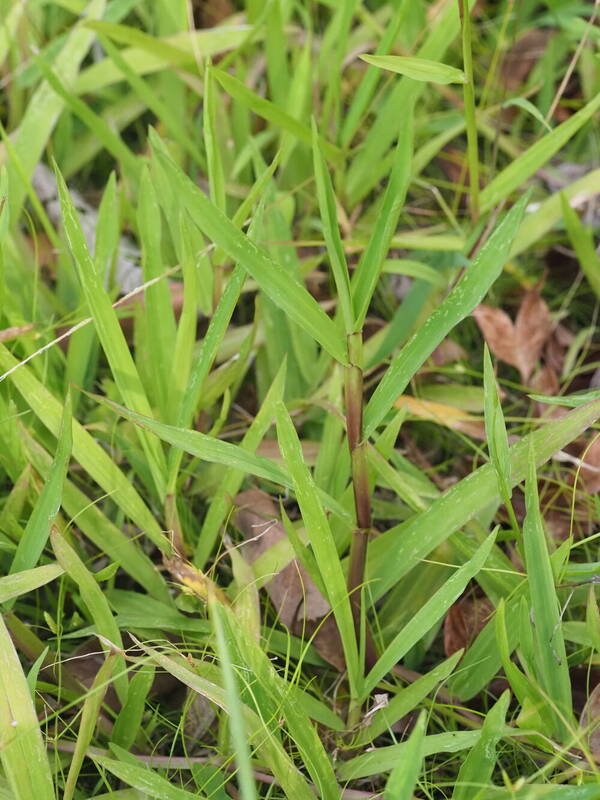
Habit
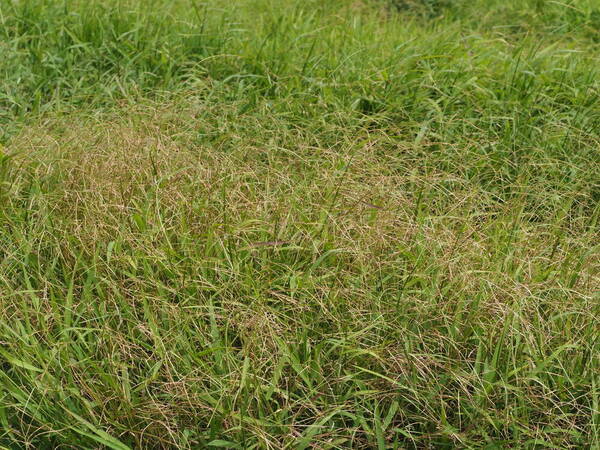
Spikelets
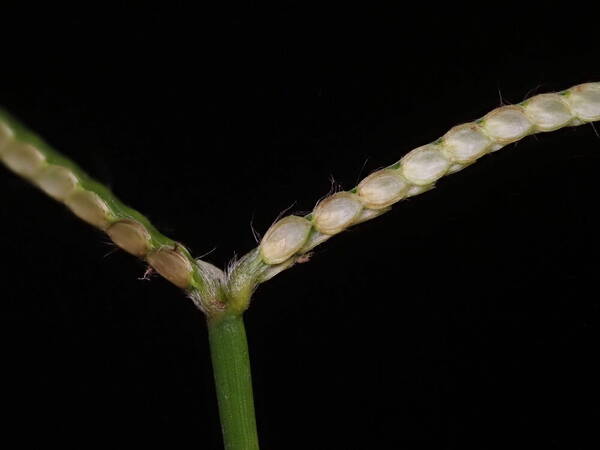
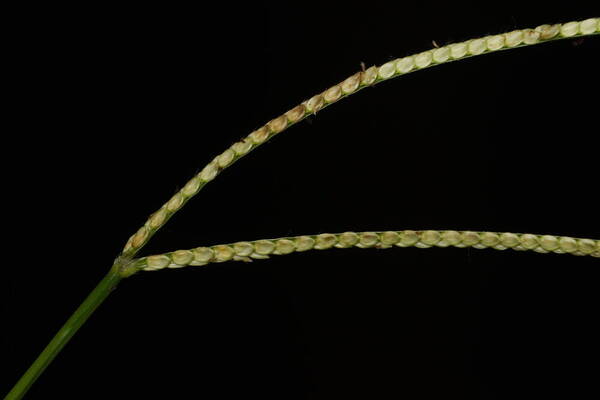
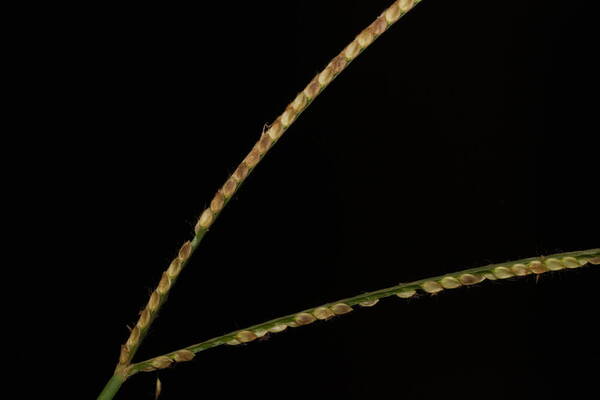
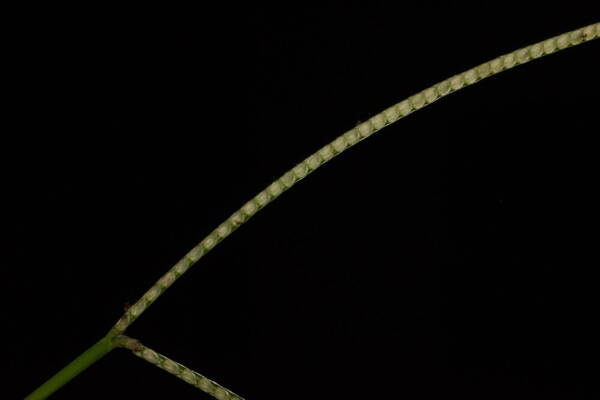
Landscape
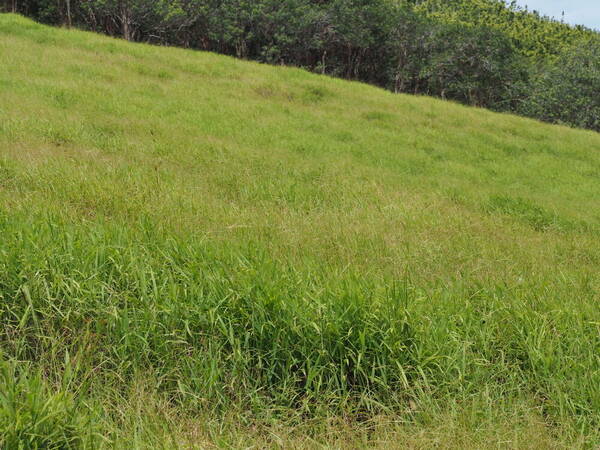
Description
Plants perennial; stoloniferous. Culms 15-80 cm, erect; nodes glabrous. Sheaths glabrous, pubescent distally; ligules 0.5-0.8 mm; blades 7-23 cm long, 1.5-8 mm wide, flat. Panicles terminal, usually composed of a pair of branches, a third branch sometimes present below the terminal pair; branches 2.5-12.7 cm, diverging to spreading, often arcuate, persistent; branch axes 0.2-0.8 mm wide, glabrous, margins scabrous, terminating in a reduced spikelet. Spikelets 1.3-1.9 mm long, 0.8-1.1 mm wide, solitary, appressed to the branch axes, ovate, stramineous. Lower glumes absent; upper glumes pilose on the margins, veinless or 2-3-veined; lower lemmas glabrous, veinless or 2-3-veined; upper florets whitish to golden yellow. Caryopses 0.9-1.1 mm, white to yellow. 2n = 18, 20, 40, 80.
(Description source: Barkworth, M.E., Capels, K.M., Long, S. & Piep, M.B. (eds.) 2003. Flora of North America, north of Mexico. Volume 25. Magnoliophyta: Commelinidae (in part): Poaceae, Part 2. Oxford University Press, New York. 783 pp http://floranorthamerica.org/Paspalum_conjugatum )
Perennials with extensive, leafy, wiry stolons; culms often reddish purple, erect from slightly decumbent base, 3-6 dm tall, simple or with 1-2 branches, glabrous, compressed, conspicuously pilose at nodes. Sheaths 2-6 cm long, compressed, usually pilose at throat and along margins near top, but otherwise glabrous; ligule a delicate membrane 0.5-1 mm long, with a dense line of hairs 1-2 mm long; blades pale yellowish green, flat, thin, chartaceous, 6-14 cm long, 5-15 mm wide, scabrous-ciliate, apex acute. Racemes 2(3), subopposite, widely spreading at apex of flowering culms, slender, 6-10 cm long, rachis ca. 1 mm wide, straight or flexuous toward apex, glossy, flat and glabrous on upper side, triangular and somewhat grooved on lower side, pedicel minute, geniculate; spikelets pale yellow, loosely imbricate in 1 row on each side of scabrous-ciliate central ridge of rachis, broadly ovate, compressed, the adaxial side convex, the abaxial side slightly concave, 1.5-1.8 mm long, apex apiculate, caducous; first glume absent, second glume concolorous, ciliate with long lax hair, otherwise glabrous, 2-nerved or 4-nerved; first lemma glabrous, similar to second lemma, thin, membranous, with 2 green submarginal nerves; second lemma coriaceous, slightly convex, as long as spikelet, glabrous; palea flat to slightly concave, 2-nerved. Caryopsis whitish, broadly ovate, plano-convex, ca. 1 mm long and wide, compressed. [2n = 18, 20, 40, 80.]
(Description source: O’Connor, P.J. 1990. Poaceae, pp. 1481–1604. In: Wagner W.L., Herbst D.R. & Sohmer S.H. (eds.)., Manual of the flowering plant of Hawaiʻi. Vol. 2. University of Hawaii Press & Bishop Museum Press, Honolulu )